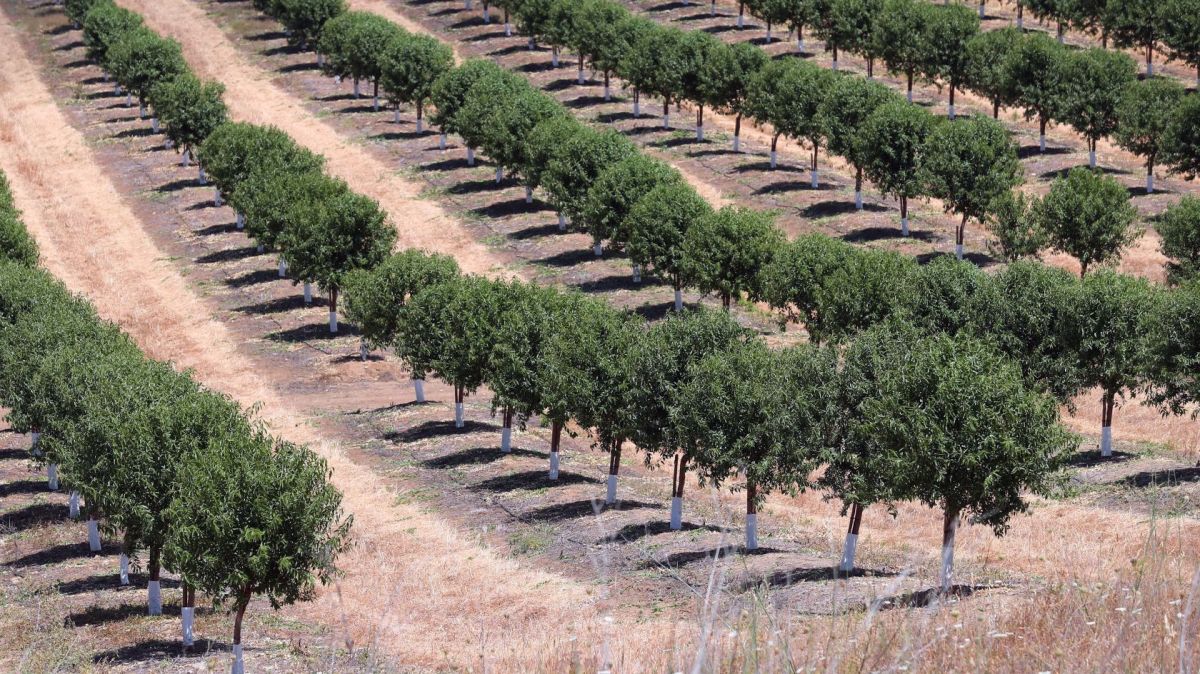They are
originally from parts of Central and South America, and their seeds were
thought to have been brought back by sea captains, with Sir James Martin’s name
cropping up in connection with them. They can appear any time from April
through August (most often May), and the blooms are sometimes present before
the fresh, new, light green leaves. The name jacaranda comes from the South
American language Guarani and it means 'fragrant', and the tree represents
wisdom, rebirth, wealth and good luck.
Some jacaranda
trees can tolerate occasional cold weather days but generally, this species
does not thrive in climates with frequent freezing temperatures. It prefers
heat and humidity but is vulnerable to trunk scald in areas with constant high
temperatures.
Growing
5-15 m tall, its main distinguishing feature is its spectacular lavender-blue
blooms which has led to its popularity as an ornamental tree. Jacaranda
mimosifolia is fast growing and resprouts easily if damaged. Its flowers
are a beautiful, lavender blue, are tubular measuring 2.5 cm long, and appear
in dense 15 - 25 cm terminal clusters, with often the entire tree in flower –
and with the ground beneath turning blue as the flowers fall off.
The
fern-like foliage usually allows diffuse light to pass through, so growing
grass under the tree is possible, but be aware that the tree can have
significant surface roots, disturbing sidewalks or nearby structures.
Jacaranda leaves, seed pods and particularly the flowers, can create a lot of
litter when they drop, so be forewarned and forearmed. This messy habit makes
the tree a poor choice near pools, driveways, and patios because of cleanup
maintenance, and if the debris isn't swept up quickly, it can rot and result in
a slimy, slippery mess.
In general,
jacaranda trees are a good choice for large outdoor areas in warm climates.
They are resistant to pests and diseases and are moderately drought-tolerant
(though they require watering during extended dry periods).
Though
jacaranda trees can be grown indoors, they typically will not flower and must
be planted outdoors eventually, so are not good for long-term container
planting. Unfortunately, when grown indoors, jacarandas they can attract aphids
and whiteflies.
All parts
of this popular ornamental shrub are poisonous, especially the attractive
berries, and produces dry round brown pods, around 2.5cm - 7.5cm wide in late
summer. They can be harvested for replanting - pick them directly from the tree
when they are dry, but bear in mind that not all pods contain seeds, and
if you are thinking of planting your own, read on to the end.

Types of
Jacaranda Tree
There are
several notable varieties of jacaranda, some grow up to over 12m tall, some
dwarf sized at only 3m, some have white flowers rather than purple, some with
dark, almost maroon, blossoms. Amongst these are 'Alba' or 'White
Christmas' – a full-size tree with a similar habit and care needs; grows tall
with lush foliage of white blooms. 'Bonsai Blue' is a Dwarf cultivar with
deep purple blooms, and ‘Maroon’, another dwarf variety that grows 3m to 7.6m
tall, with dark maroon-purple blooms.
How to
grow jacaranda from seed
Do you
fancy having a go at growing your own tree? Firstly, soak the seeds in
water for 24 hours, then place the seeds on a bed of potting soil in seedling
containers or pots. Cover with a thin layer of potting soil and keep the soil
moist. The seeds should sprout in two to eight weeks. Wait eight months before
you transplant the seedlings into a moderately well-draining sandy soil, as water-logged
soil can lead to root rot.
If
successful, you’re going to need lots of space for them to thrive and flourish,
making them not the best choice for a small backyard or as a fence-side
planting - your neighbours won’t be impressed - but for now, sit back and wait
for 20 years for your tree!
Marilyn writes regularly for The Portugal News, and has lived in the Algarve for some years. A dog-lover, she has lived in Ireland, UK, Bermuda and the Isle of Man.


















Reading about jacaranda took me way back to my school days in Zimbabwe( Rhodesia then) when the jacaranda trees lining "the Avenues" in the capital were ablaze in purple, the downside being was a surge among us of " pink eye" ( type of conjunctivitis " while tthe blossom lasted.
By Denise Pereira from Other on 22 Feb 2023, 16:53